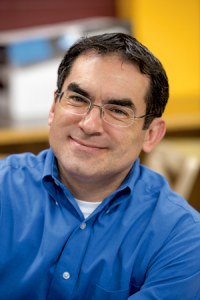Minnesota, long known of its high quality educational system from kindergarten through college, now has one of the nation’s widest achievement gaps–the term used to describe the difference in academic performance between groups by ethnicity. It’s a problem that spells trouble for the state’s future, from the employment, health, and wellbeing of individuals to projected workforce retention, tax base, quality of life, reputation, and the resilience of almost every facet of society.
The question is not whether anything is being done about the achievement gap. A lot is being done–so much, and in so many places, by so many organizations, that the first question is how to identify efforts and how to tell what is working.
At President Eric Kaler’s inauguration in 2011, he pledged that the University would tackle the state’s distressing achievement gap. After a series of listening sessions on campus and consultations in the community, the president designated the College of Education and Human Development to lead the University’s efforts to close the gap.
 Enter Michael Rodriguez, an associate professor of educational psychology who specializes in measurement. His area of expertise, psychometrics, is a small field, while the demand for it–especially in education–is huge.
Enter Michael Rodriguez, an associate professor of educational psychology who specializes in measurement. His area of expertise, psychometrics, is a small field, while the demand for it–especially in education–is huge.
In January, Rodriguez was appointed to a new position devoted to addressing the achievement gap–the Campbell Leadership Chair in Education and Human Development. In his new role, Rodriguez will support ongoing work to reduce the gap, expand U-wide collaboration, and advise President Kaler on the best ways to improve educational access and success.
“People use ‘achievement gap’ as an umbrella term,” says Rodriguez, “recognizing that there are many gaps–resources, access, professional development, teaching, ethnic, gender, language.” There is even a gap in the belief that things can change.
Rodriguez is not deterred by vast quantities of complex data. All those numbers give him energy.
“We lack good information about what kids can and can’t do,” says Rodriguez. “Unless you have good information to make useful decisions, more money isn’t going to necessarily help.”
Rodriguez has worked in classrooms with teachers to improve assessment practices, with states to make tests more accessible, and with nations like Guatemala to develop their educational measurement systems. He has become a familiar face in Minnesota’s largest school district offices as well as rural districts with large immigrant populations, such as Long Prairie. In the process, he has come face to face with some shocking statistics.
The Minneapolis-St. Paul metropolitan area presents a unique environment in which to make significant progress. Many of the school districts where the gap is largest are located within a 20-mile radius of the Twin Cities campus. CEHD now has working partnerships in place in many of them through such initiatives as the Teacher Education Redesign Initiative (TERI) and the Center for Applied Research and Educational Improvement (CAREI).
While Rodriguez’s ongoing work has already placed him in the midst of gap-related efforts, so does the work of many others on the college faculty. When prompted to consider the chair, Rodriguez thought long and hard. In the end, he became convinced his background was a good match for tackling the problem at this point in time.
“We need to understand the scope, breadth, and depth of what we do,” he says. “I want to do this in a way that makes it manageable.”
To succeed, Rodriguez will have to apply all the knowledge, skills, and resources he can muster. His first role is networking. Beginning with CEHD and then branching out across the campus and beyond, he will lead an audit of activities aimed at closing the achievement gap. Providing coordination will become more important as the work develops.
Building a culture of evidence
Rodriguez is known for his energy, enthusiasm, creative ideas, and his proven ability to network and form partnerships. In his new role, he will draw upon all of that and a lifetime of Minnesota experience. He’s a fifth-generation Minnesotan raised in St. Paul, with family ties in Osakis. After graduating from high school in Woodbury, he majored in psychology at the University of Minnesota-Morris, then prepared to teach elementary school. Instead, he finished a master’s in public policy with the late John Brandl, legislator and civic leader, as his adviser, and went to work for the Wilder Foundation.
By the time Rodriguez decided to pursue a doctorate, he knew that the University’s top-ranked Department of Educational Psychology was where he wanted to work one day. He left the state to draw from the perspectives and strengths of another leading program at Michigan State University before returning to win his dream job in Minnesota. Today he is one of only two educational measurement faculty in Minnesota, teaching in the only doctoral program in the world that includes statistics education.
“John Brandl said, ‘What we know doesn’t always inform what we do, and we have to fix that,'” Rodriguez says. “Every course I teach has that component–improved measurement for improved decision making. What I hope to do in the Campbell Chair is to keep building a culture of evidence.”
Story by Gayla Marty | Photo by Greg Helgeson | Spring 2013



